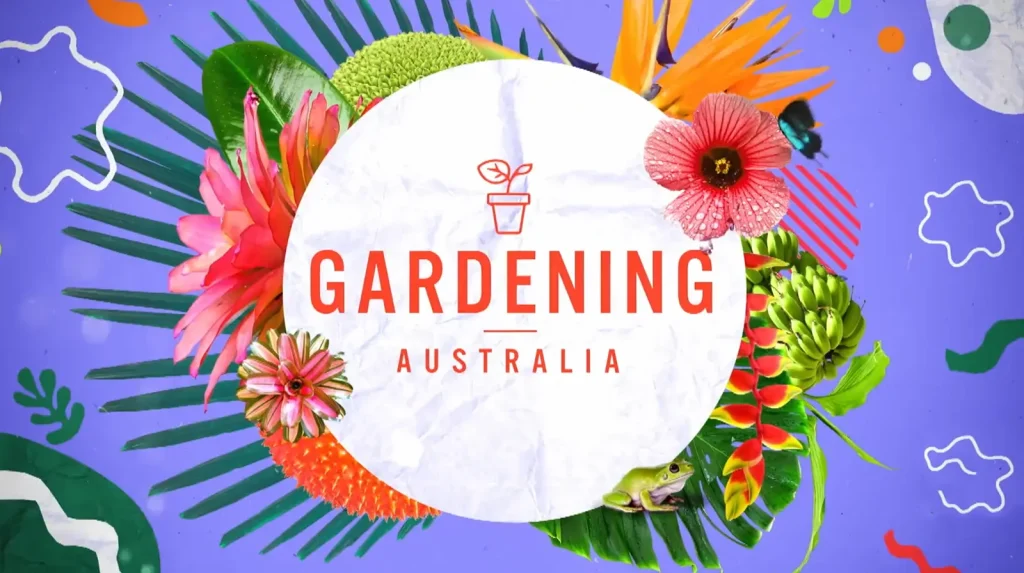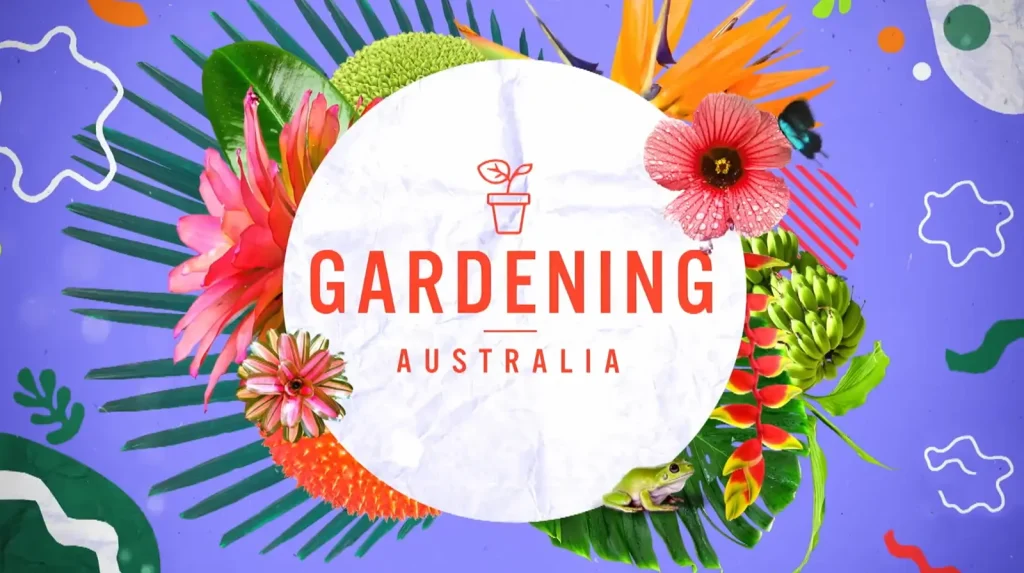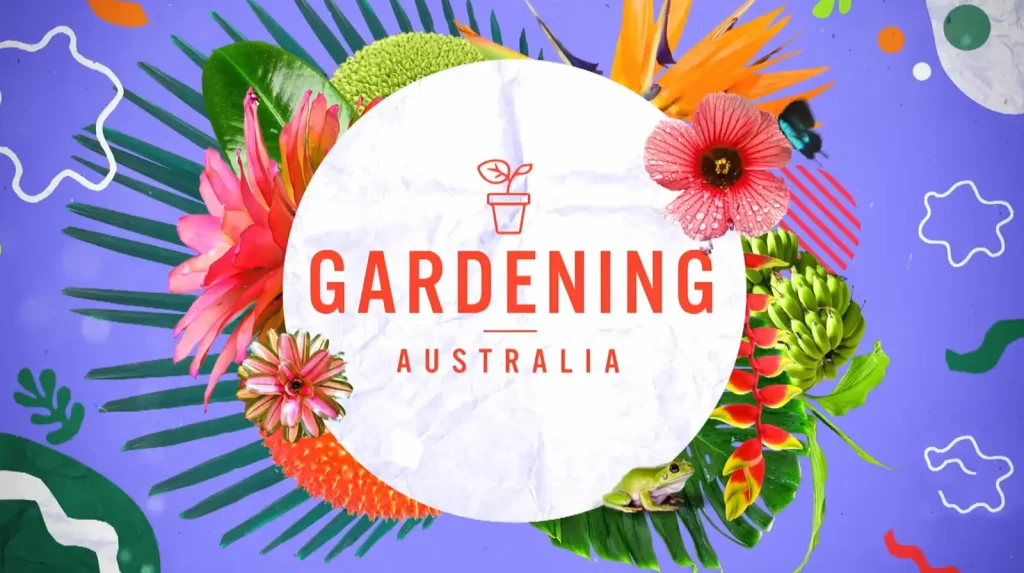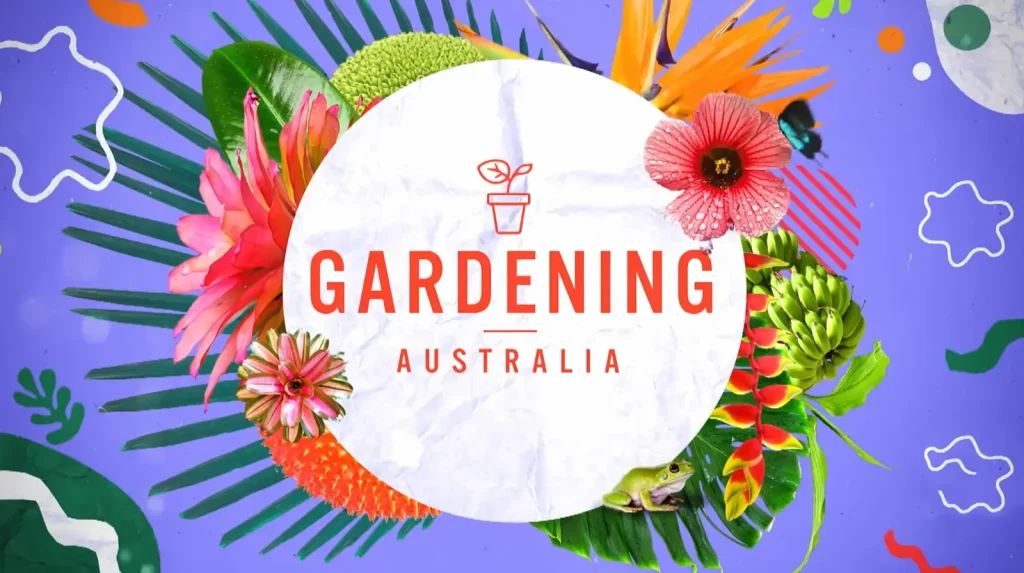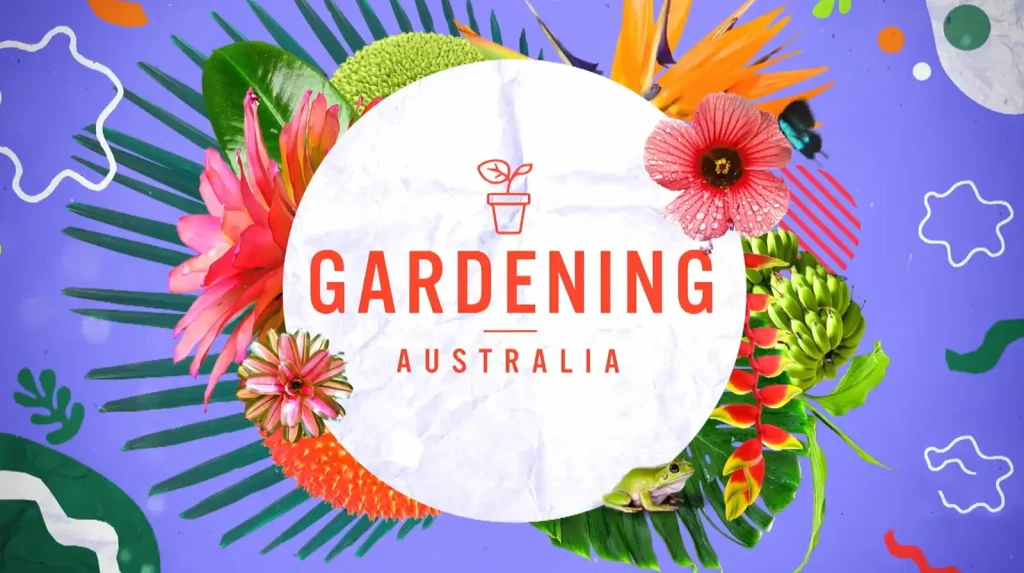Gardening Australia 2024 episode 13: set against the vibrant backdrop of autumn, viewers are invited to traverse a captivating array of botanical adventures. This season, the episode skillfully weaves together a tapestry of gardening endeavors that echo the rich diversity and the transformative power of nature. The journey begins with Costa Georgiadis as he immerses himself in the lush tranquility of a tropical oasis. Here, viewers are treated to a feast of vibrant colors and exotic plant species that thrive in the humid, sun-drenched habitat. Costa’s exploration is not just a tour; it’s an educational venture, providing insights into the sustainable practices that can help such a garden flourish in varied climates.
Switching gears, we then follow Hannah Gadsby through the dim, intriguing depths of a mushroom tunnel. This segment illuminates the mysterious world of fungi and their crucial role in the ecosystem. Hannah’s engaging narrative explains how these fungi are cultivated and how their unique properties can be harnessed for both culinary and ecological benefits.
The episode takes a colorful turn with Millie Ross, who delves into a community-led wildflower reseeding project. This initiative highlights the importance of indigenous flora and its impact on local wildlife. Through Millie’s eyes, viewers learn about the selection of wildflowers, the techniques of sowing and maintaining them, and the overarching benefits of these efforts on biodiversity.
Adding a reflective note, Jerry Coleby-Williams shares the evolution of his personal garden over the past 20 years. This segment offers a more introspective view, showcasing the changes that time and care have wrought on his garden. Jerry discusses the challenges and triumphs of maintaining a garden that not only grows but thrives with age, providing a sanctuary for both the gardener and native wildlife.
Finally, the episode introduces us to an unexpected gardening enthusiast, Lachie Weller, who has transitioned from a professional football player to a prolific gardener. Lachie’s story is one of passion and transformation, illustrating how gardening can offer a therapeutic and rewarding escape from the bustling world of sports.
“Gardening Australia 2024 – Episode 13: Autumn” masterfully captures the essence of gardening as both an art and a science. It invites its audience to explore the serene beauty of a tropical oasis, delve into the earthy depths of a mushroom tunnel, participate in the renewal of landscapes with wildflower reseeding, reflect on the enduring growth of a well-tended garden, and discover a new side of a familiar face in the gardening community. This episode not only educates but also inspires viewers to engage with their environments, fostering a connection with the earth that is both nurturing and profound.
Gardening Australia 2024 episode 13
Escape to the Tropics
Costa explores a Sydney garden that masterfully captures the essence of a tropical rainforest within the warm-temperate climate of NSW.
Featured Garden
Landscaper: Matt Cantwell
Location: Garigal Country in Avalon, NSW
Climate Zone: Warm Temperate
Garden Established: 2003
Style: Tropical Paradises Amidst a Verdant Grassland
Twenty years ago, landscaper Matt Cantwell embarked on a transformative journey with this garden, starting from a vacant lot. The existing mature palm groves provided a natural canopy, or ‘ceiling,’ under which Matt sculpted the garden’s ‘walls’ and intricately placed ‘decorations.’ His approach brings to life a dynamic and immersive rainforest experience.
The garden is crafted with narrow walkways winding through each ‘rainforest island,’ offering visitors a close encounter with the lush, thriving flora. Here, climbing plants ascend the trunks, creating a verdant tapestry, yet the spacing allows each plant to stand out, displaying their unique beauty.
The strategic layering of plant heights captivates and maintains the interest of visitors across multiple levels, continually shifting their focus. The design cleverly incorporates openings that frame picturesque views of the surrounding hills, drawing one deeper into the garden’s enchantments.
According to Matt, these design principles are universal, applicable to any scale—from potted arrangements and small courtyards to expansive garden landscapes.
Situated in a high-rainfall area, the garden benefits from the moisture that enhances the lushness of the plantings and simplifies maintenance. The rain adds a shimmering, fresh dimension to the foliage, enriching the sensory experience of the garden.
Matt emphasizes that patience and long-term planning are crucial to cultivating such a garden. His ongoing dedication to this project demonstrates his commitment to these principles.
Featured Plants:
- Arrowhead (Syngonium podophyllum ‘White Butterfly’): This delicate climber adds a touch of elegance with its variegated leaves.
- Silver Lady Fern (Blechnum gibbum cv.): A graceful fern that provides a soft texture contrast against the bolder foliage.
- Ctenanthe (Ctenanthe setosa ‘Grey Star’): With its striking grey-green leaves, this plant is a visual standout.
- Silver Urn Bromeliad (Aechmea fasciata ‘Primera’): This bromeliad’s silver-green leaves and pink flower spike offer a dramatic flair.
- Flamingo Flower (Anthurium cv.): Known for its vivid red spathes, this plant adds a splash of color.
- Peace Lily (Spathiphyllum ‘Sensation’): This popular indoor plant thrives outdoors here, showcasing large, glossy leaves.
- Giant White Bird of Paradise (Strelitzia nicolai cv.): A striking architectural plant that adds height and drama.
- Red Tower Ginger (Costus comosus): Its bright red inflorescence stands out against the greenery.
- Variegated Star Jasmine (Trachelospermum jasminoides ‘Tricolor’): This climber features beautifully variegated leaves and sweet-scented flowers.
- Swamp Lily (Crinum pedunculatum): This robust lily flourishes in moist soils, adding to the tropical look with its large, fragrant blooms.
Through meticulous planning and a deep understanding of botanical interactions, Matt Cantwell has created not just a garden, but a living, breathing rainforest experience in Avalon. This garden not only showcases his skill and dedication but also serves as an inspiring example of how varied climates can host a slice of tropical paradise.
Room for Shrooms
In the serene landscapes east of Hobart, nestled among the gentle slopes of Mount Rumney, an unexpected discovery transformed the life of Dean Smith and led him into the enchanting world of mushroom cultivation. This journey began when Dean purchased a property, which, to his surprise, included a disused railway tunnel—an artifact from a bygone era, constructed in 1891 and abandoned since 1926 when the trains ceased to rumble through.
The tunnel, with its constant cool temperatures—hovering around 11°C in winter and rising only slightly to 14-15°C in the summer—proved to be an ideal environment for growing cold-tolerant varieties of mushrooms. Today, Dean cultivates a selection of fungi, predominantly oyster (Pleurotus ostreatus) and shiitake (Lentinula edodes), which thrive under these conditions.
Oyster mushrooms, known for their robustness and ease of cultivation, are perfect for beginners due to their forgiving nature towards temperature fluctuations. These mushrooms grow on a specialized substrate mix comprising sawdust, lime, gypsum, and bran, creating an optimal environment for their development. Under these conditions, the mushrooms not only flourish but also begin setting spores, visible as a delicate mist, indicating a healthy and thriving growth.
Beyond culinary varieties, Dean also explores the medicinal side of mycology by growing Turkey Tail (Trametes versicolor) mushrooms, highly sought after for their therapeutic properties. Another unique addition to his collection is the Lion’s Mane mushroom (Hericium erinaceus), notable for its distinctive shaggy appearance, resembling a white lion’s mane.
Mystical Mycelium: Dean Smith’s Unexpected Journey into Mushroom Cultivation
The cultivation process begins with Dean acquiring a mother culture of the mushrooms from a reputable source in Belgium. He meticulously grows the cultures on agar plates, a critical step where precision and sterility are paramount. These cultures are then used to inoculate bags filled with a sterilized mixture of oat and millet. This painstaking process ensures the health and productivity of the mushrooms as they are transferred to their final growing medium.
Dean’s venture into mushroom cultivation was serendipitous but has grown into a passionate endeavor. He describes himself as “just a guy with a tunnel,” yet his deep engagement with the scientific aspects of mycology and the hands-on experience have fostered a profound appreciation for this form of agriculture. Learning the techniques was initially challenging, but Dean finds the process increasingly intuitive with practice.
Expanding his operations, Dean recently acquired a shipping container, which he maintains at temperatures slightly warmer than the tunnel, to cater to varieties that prefer such conditions. This new setup allows him to diversify his crop and experiment with different types of fungi.
Dean’s newfound passion for mycology isn’t limited to cultivation. He is also cultivating a taste for cooking with his harvest. Preparing the mushrooms involves simple yet satisfying techniques: shiitake stems are removed and torn into shreds, king oysters are sliced into 1cm thick pieces, and both are quickly sautéed with a splash of oil on a hot barbecue. Just before serving, they are seasoned with salt and served with a tangy vinegar soy sauce, enhancing the mushrooms’ rich flavors.
As Dean continues his journey in mushroom cultivation, he not only enriches his own life but also contributes to the culinary and medicinal landscape, offering locally grown, sustainable fungi to his community. This magical tunnel, once a passage for trains, now serves as a passage to a hidden world of fungal wonders, where Dean plays both scientist and chef, exploring the myriad possibilities that mushrooms have to offer.
F.A.Q. for Gardening Australia 2024 Episode 13
Q.: What unique insights does Costa Georgiadis offer about tropical gardens in this episode?
A.: Costa Georgiadis explores a Sydney garden styled as a tropical oasis within a warm-temperate climate. He provides valuable insights on sustainable gardening practices that support exotic plants in less ideal climates. By emphasizing the use of mature palm groves and strategic plant positioning, Costa highlights how to create a lush, rainforest-like environment even outside traditional tropical zones.
Q.: How does Hannah Gadsby illuminate the role of fungi in ecosystems during the episode?
A.: In a fascinating segment on mushroom cultivation, Hannah Gadsby delves into the mysterious world of fungi, exploring their ecological and culinary benefits. She walks through a mushroom tunnel, explaining the cultivation processes and the essential role fungi play in environmental sustainability, such as breaking down organic material and contributing to nutrient cycling in ecosystems.
Q.: What is the focus of Millie Ross’s segment on wildflower reseeding?
A.: Millie Ross’s segment centers on a community-led initiative to reseed local wildflowers, highlighting the importance of preserving indigenous flora. She discusses the selection of species, sowing techniques, and maintenance tips, as well as how these efforts enhance biodiversity and support local wildlife, emphasizing the ecological impact of restoring native plant habitats.
Q.: Can you describe Jerry Coleby-Williams’s reflections on his garden’s evolution?
A.: Jerry Coleby-Williams shares a reflective journey on the development of his garden over two decades. He discusses the changes, challenges, and successes he has experienced while nurturing his garden, providing insights into the dynamics of a mature garden that evolves over time. His story is a testament to the dedication required to maintain a flourishing garden that serves as a sanctuary for both the gardener and native species.
Q.: What transformation does Lachie Weller undergo in this episode of Gardening Australia?
A.: Lachie Weller, a former professional football player, showcases his transition into gardening, illustrating it as a therapeutic and enriching endeavor. His story highlights the personal and transformative aspects of gardening, demonstrating how it can serve as a peaceful retreat from the high-paced world of professional sports and foster a deep, rewarding connection with nature.
Q.: How does the episode convey the impact of gardening on personal and environmental well-being?
A.: The episode weaves a narrative that portrays gardening not just as a hobby but as an integral part of fostering personal and environmental well-being. Through various segments, viewers learn about the therapeutic benefits of engaging with nature, the environmental impact of sustainable practices, and the joy and satisfaction derived from creating and nurturing life in a garden.
Q.: What gardening techniques are highlighted in the tropical garden segment?
A.: The tropical garden segment with Costa Georgiadis emphasizes several key gardening techniques, such as the strategic layering of plant heights to maintain visitor interest, the use of natural canopies to protect undergrowth, and the creation of narrow walkways to enhance close encounters with flora. These techniques are crucial for anyone looking to replicate a tropical environment in a temperate climate.
